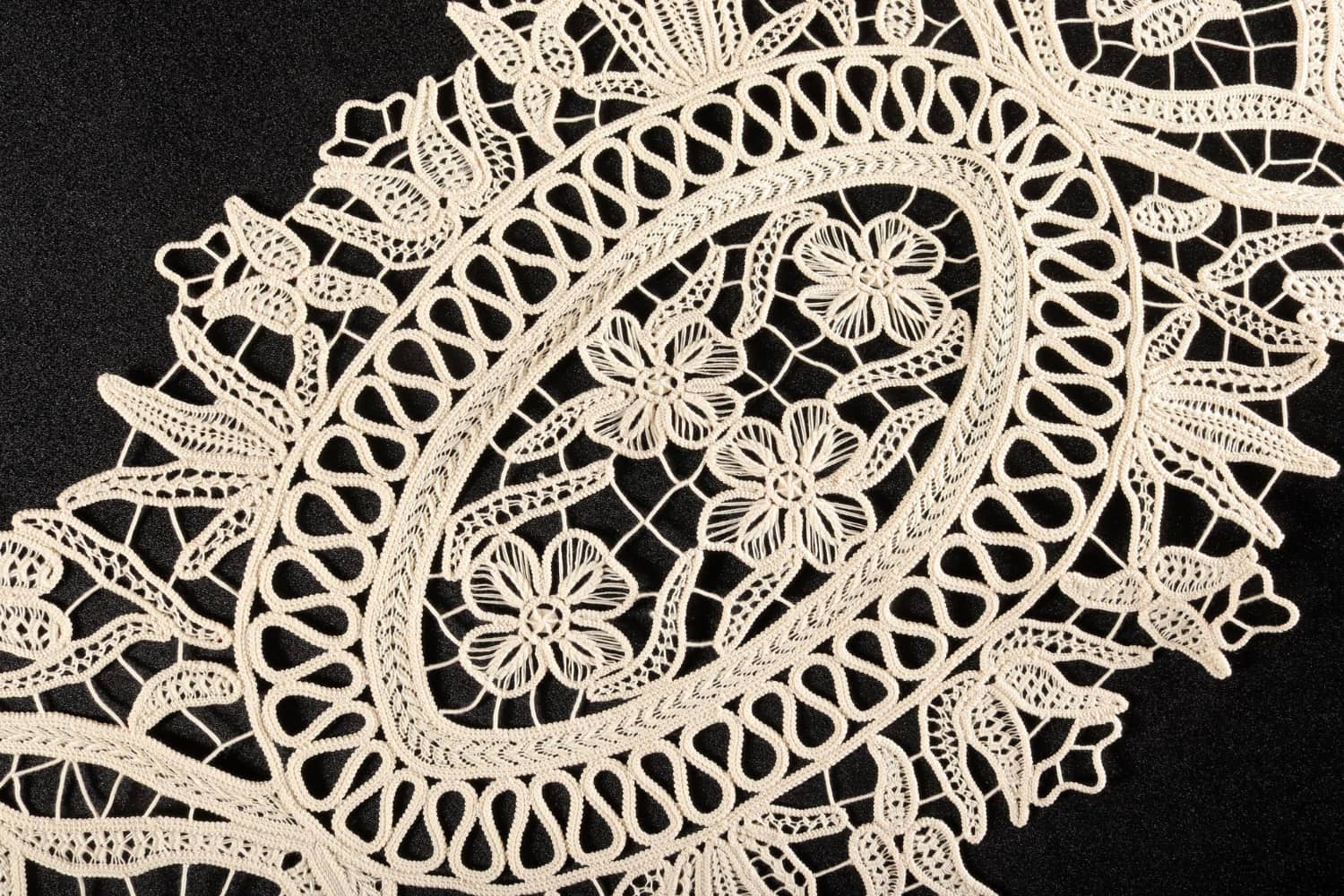Types of macramé lace: the elegance of a timeless tradition
Macramé embroidery is a symbol of sophistication and tradition, capable of transforming fabrics and garments into works of art. With its intricate geometries and three-dimensional texture, macramé is an undisputed protagonist in the luxury industry, used for exclusive clothing, accessories, and furnishings. But what are the types of macramé lace that make this technique so special? Let's find out together.
Origins and characteristics of macramé lace
The term “macramé” comes from the Arabic word “migramah,” which means “decorative fringe.” Originating in the Middle East, it quickly spread to Europe through the trade and cultural exchanges of the Middle Ages. This technique is distinguished by the use of decorative knots, which create complex patterns on fabrics or yarns.
In the luxury sector, macramé is valued for its ability to combine tradition and modernity, adapting to the demands of sophisticated industrial production without losing its artisanal charm.

The main types of macramé lace
1. Classic macramé
Classic macramé is characterized by floral and arabesque designs, made entirely by hand. This type of lace is often used for bridal gowns and haute couture garments, where precision and quality of detail are paramount. Natural yarns, such as cotton and silk, are the most commonly used materials, ensuring a soft texture and luxurious look.
2. Industrial macramé
With the advent of modern technology, macramé has been integrated into industrial embroidery processes. This has made it possible to reproduce complex motifs with greater speed while maintaining the typical elegance of macramé. Ideal for large-scale luxury garment production, industrial macramé often uses synthetic yarns to ensure strength and uniformity.
3. Geometric macramé
This type of lace is distinguished by its linear and abstract patterns, which create a modern, minimalist effect. Perfect for contemporary clothing and accessories, geometric macramé is often made with mixed techniques, combining hand knots and mechanical workmanship, offering a visually appealing result.
4. Three-dimensional macramé
One of the most recent innovations in the world of macramé is the creation of three-dimensional patterns. This type of lace uses thick yarns and advanced processing techniques to achieve a sculptural effect. Popular in the design of accessories and high-fashion details, three-dimensional macramé adds depth and dynamism to any creation.
5. Mesh macramé
Mesh macramé features a wide-mesh structure, which creates a light and airy effect. Often used for shawls, summer garments, and indoor decorations, this type of lace is ideal for adding a touch of casual elegance.
6. Floral macramé
This style focuses on detailed botanical motifs, such as flowers, leaves and branches. Floral macramé is especially popular in the bridal industry, where it is used to decorate wedding dresses, veils and accessories, giving a romantic and sophisticated look.
The role of macramé in the luxury industry
In the world of fashion and luxury furniture, macramé lace represents an added value in terms of quality and design. Due to its versatility, macramé is used in multiple applications, including:
- High-fashion clothing: from evening gowns to casual-chic outfits, macramé enhances each garment with unique details.
- Accessories: handbags, belts and luxury footwear often feature macramé details, which add a handcrafted touch.
- Furniture: pillows, curtains and tablecloths made from macramé give interiors a timeless elegance.
The sustainability of macramé
An increasingly important aspect in the luxury sector is sustainability. Macramé, thanks to its use of natural materials and the possibility of combining manual and industrial processing, fits perfectly into this trend. Cutting-edge companies use eco-friendly yarns and sustainable production processes to reduce environmental impact without compromising quality.
How to choose the right macramé for your project
Choosing the right type of macramé lace depends on the application and the desired effect. Here are some useful tips:
- Consider the design: for elegant outfits, opt for floral or three-dimensional patterns; for a contemporary style, choose geometric macramé.
- Consider materials: natural yarns such as cotton are ideal for a classic look, while synthetic yarns offer more durability.
- Customization: many companies offer the option of customizing macramé patterns, making it unique and perfectly suited to your project.
Conclusion
Macramé lace is more than just an ornament: it is a symbol of tradition, innovation and luxury. From classic to modern motifs, each type of macramé tells a story of craftsmanship and timeless beauty. Choosing the right macramé lace can transform a garment or accessory into a work of art, capable of fascination and longevity.